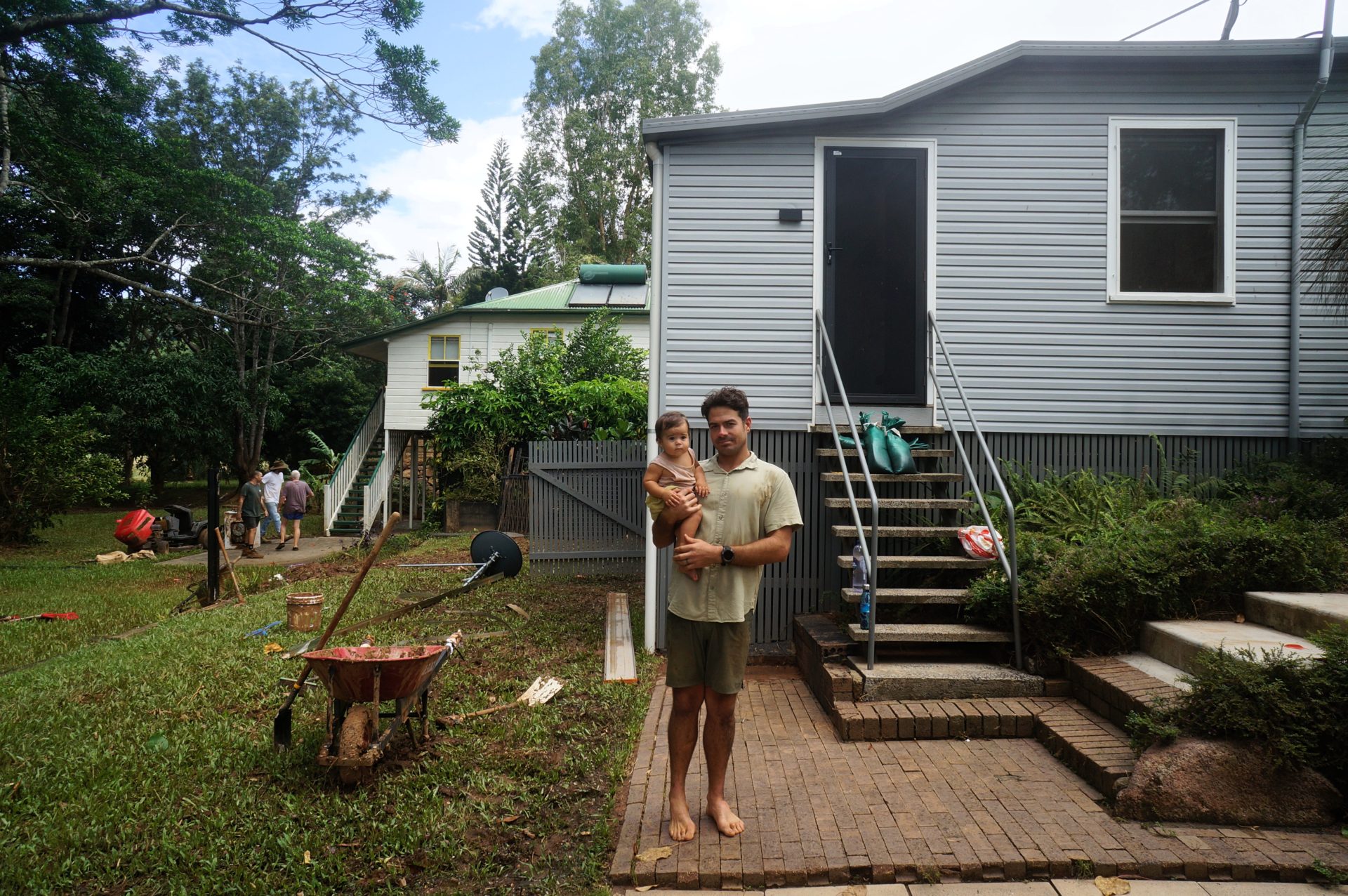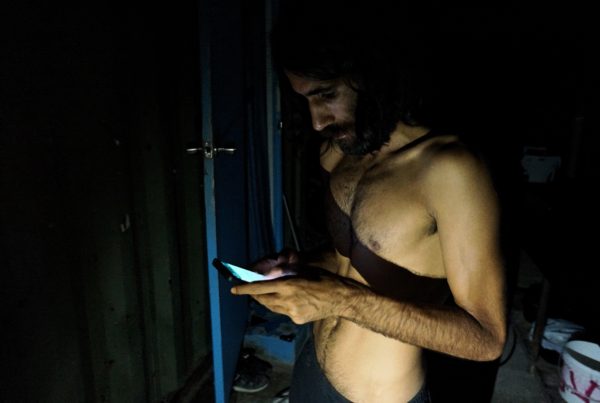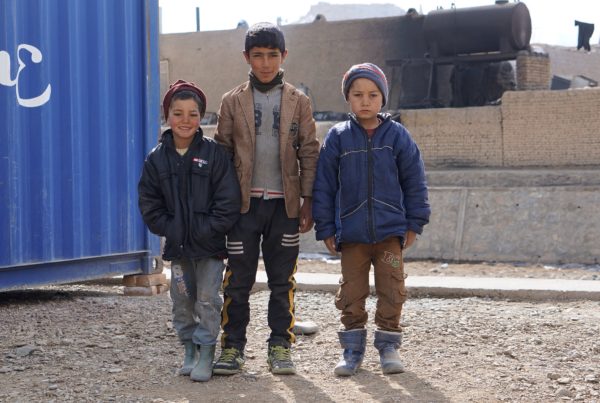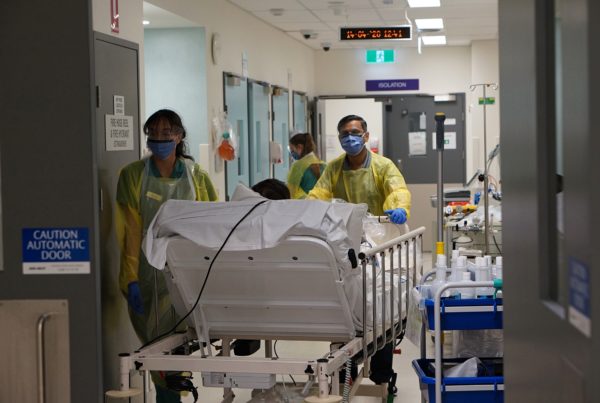The towns of the New South Wales northern rivers are used to floods – they are part of the region’s history and a product of its geography. But this time was different. The speed at which flood waters rose, the sheer volume of water and the scale of the damage caught many by surprise.
Politicians are calling these floods a once-in-a-100, or even a once-in-a-1,000-year event, but in reality these catastrophic weather events are becoming more intense and more frequent.
In Wilsons Creek, about 5km from Mullumbimby, flood waters rushed through the valley on Monday causing immense destruction, with most of the houses built along the river flooded.
Sahar Zadah, who lives in the valley with her husband and her two children, said that when the water came crashing through the valley it was “one roaring, terrifying sound” and was so powerful that 10 cars were washed downstream, “torn to pieces as if a bomb went off”.
Landslides at Upper Wilsons Creek, Huonbrook and Wanganui picked up vehicles, destroyed roads and bridges, ripped out water tanks and in one case demolished a whole house. Another landslide killed a woman.
“The landslides were next level in terms of destruction,” Zahar said.
Sahar’s sister, Shafiqa Irwin, and her partner, Alex Heilpern, were caught inside their home in Upper Wilsons Creek when it collapsed because of a landslide.
They heard a rumble and within a second they were covered in wreckage, with Irwin trapped beneath rubble, both her legs broken. She screamed for Alex but he had been knocked unconscious by the impact. When he came to, he managed to free Shafiqa and they went to a neighbour’s house.
Sarah Black, a Mullumbimby paramedic, and a community member named Richard hiked four hours through partially destroyed roads and landslides to treat the pair and bring them morphine, as there was no access for ambulance services. They spent 24 hours with the injured couple before they were rescued by helicopter, 38 hours after the house first collapsed.
Shafiqa is now at the Gold Coast University hospital and is expected to need extensive surgery on both her ankles. She and Alex did not have insurance on their home, and with all their possessions destroyed, they have set up a GoFundMe page.
“People are breaking down here. It’s so sad. We are barely coping. But we are supporting each other as best as we can,” Sahar said.
With the community isolated, Wilsons Creek locals Steve Brown and his three sons Jai, Josh and Ben began using excavators to fix the roads. The routes they have created are for emergency use only, but they have allowed energy providers in to restore some electricity.
Over on the coast, the suburbs of New Brighton, South Golden Beach and Ocean Shores also succumbed to rapidly rising rivers.
Raffaella Baker, her partner and daughter woke at 2am on Monday to find water rising around their riverside home in New Brighton. By the time the SES evacuation message was sent at 5am, there was no escape. Instead, they watched the water rise towards their second storey.
“We never thought it would get that bad that quickly,” Raffaella said. “It all happened very fast.”
Phone and internet services were cutting in and out, but Raffaella managed to get hold of her mother who notified the SES that they were in trouble. With letterboxes and landmarks submerged, rescuers had difficulty locating them. The heavy rain muffled their calls for help and the tree canopy hid their home when boats passed by.
“That was actually quite scary,” Raffaella said.
It was only after their neighbour paddled his surfboard around to their house that emergency services found them.
Raffaella and her daughter stayed with Raffaella’s sister, Billie Baker, in East Ballina before the floods arrived four days later. Ballina residents were then also evacuated. Billie Baker said Ballina was a disaster zone, with locals using boats and jet skis to evacuate people and animals.
“No one is helping. There’s no police or services, apart from the SES and surf lifesaving clubs. There are just volunteers. Where are the professionals?” Baker asked.
In Burringbar, about 20km south-east of Murwillumbah, Sean and Emily Marshall, and their one-year-old daughter Delila, were woken by a knock at the door at 10.30pm on Monday night. Their neighbour warned them that the flood water was rising.
At that time, the flood water was at the bottom of the stairs that lead to their back door. Thinking they had plenty of time, the family went back to sleep, but by midnight the water had risen halfway up the back steps. By 3am the water was only two steps away from their back door.
At this point, they decided to move Emily and Delila to the neighbour’s house, which was elevated higher than theirs. It was pitch black and they couldn’t see what was in the water or where it was coming from. As they crossed, it was hard to keep steady footing and they feared if they slipped they might lose their daughter.
“It was not powerful, but still dangerous. But that was our only chance to get out,” Sean said.
They managed to navigate the crossing and Sean passed Delilah and Emily to their neighbours before returning to secure their house. The knee-high water had turned into waist-high rapids and Sean was isolated. There were no emergency services.
“The rain was at Tweed Heads, then it circled back and it evolved into a rain bomb. It just kept raining and raining,” Sean said.
As the downpour intensified, water rushed into the family’s yard. Fences were torn away; wheelie bins, ride-on mowers, and heavy machinery were picked up by the torrent.
Sean made all sorts of attempts to divert water away from their house. He sandbagged the home, put plywood at the front door and a mattress at the back to stop water from entering. He tried using roof sheets, surfboards and paddleboards to direct the flow.
All the items they had stored under the house were taken by the floods. The water under the house was chest-high and life-threatening to navigate, submerging one of the family’s cars.
Just a few months earlier they had stopped paying for flood insurance, which was costing them upwards of $1,100 a month.
“The premiums are expensive, and they’re going to be even more expensive now. Five years ago, that was a 100-year flood. So there was no thought that was going to happen again,” Sean said.
The rain peaked at 3pm. The woman across the street from Sean was stranded on her second-floor balcony. There was no one coming to help her if the water kept rising but thankfully by about 5pm the rain had subsided.
Thanks to Sean’s efforts the water hadn’t entered the family’s home, but only by a few inches. The next day they returned to their house to begin the clean up.
“The problem now is you’re going to have insects, snakes, rats, mice,” Sean said.
Conditions in the region remain dire and residents are angry. Communities have been left without electricity, internet, or phone reception and access to food, clean water and medical supplies is limited. Residents say the failure of authorities to deliver essential services has hampered evacuations and put lives at risk.
Locals are not just sitting waiting for help, however. Mullumbimby Civic Centre became a hub for volunteers wanting to assist residents of the flood-damaged town but also to distribute aid. Eddie Dostine, from Byron Bay, and a crew of volunteers hiked food and petrol supplies into Main Arm, doorknocking homes to check on residents.
Another group of young people brought chainsaws and tools to build bridges over causeways and landslides so people could access the area with quads and motorbikes.
“It felt weird not helping,” Eddie said.
This article was first published in the Guardian Australia.



